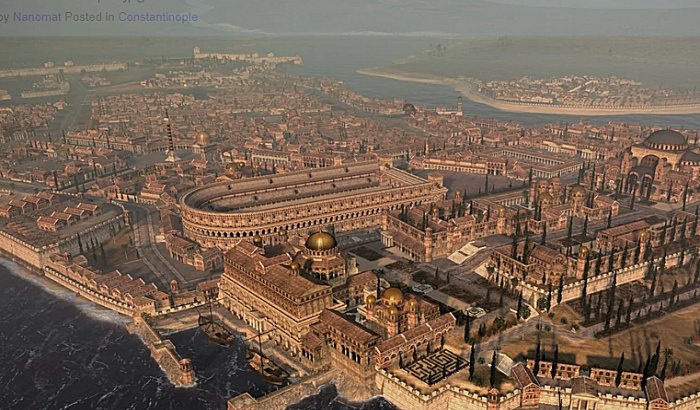Why Was Constantinople Called New Rome?
A. Sutherland - AncientPages.com - Constantinople became a new Rome, and the Emperor Constantine the Great celebrated the inauguration of his new capital city, and the name of the town originates from his name.
In 330 AD, he split the Roman Empire into two parts: Eastern and Western, and the western half centered in Rome while the eastern half centered in Constantinople (City of Constantine).
![Map of Constantinople (1422) by Florentine cartographer Cristoforo Buondelmonti[39] is the oldest surviving map of the city, and the only one that predates the Turkish conquest in 1453.](https://www.ancientpages.com/wp-content/uploads/2020/03/constantinople14.jpg) Map of Constantinople (1422) by Florentine cartographer Cristoforo Buondelmonti is the oldest surviving map of the city and the only one that predates the Turkish conquest in 1453. Source
Map of Constantinople (1422) by Florentine cartographer Cristoforo Buondelmonti is the oldest surviving map of the city and the only one that predates the Turkish conquest in 1453. Source
After restoring the unity of the Empire, Constantine the Great introduced many governmental reforms and increased financial resources for the Christian church.
Then, he identified the site of Byzantium - a small Greek port - as the new center of the Empire and the seat of government, officially known as Nova Roma ('New Rome').
See also:
Why Is Rome Called ‘The Eternal City’?
5 Different Types Of Priests In Ancient Rome – Their Role And Responsibility Explained
Tyrannical Tarquin The Proud: The Seventh And Last King Of Rome Was Banished
Rome that had been the capital for over a thousand years was too far from the frontiers of the Empire, and it might have seemed unimaginable to propose that ancient Rome be moved to another location.
Constantine's dedication of the new city was most probably the most significant moment of his reign. The new capital had a perfect strategic location; it was standing on a piece of land projecting into the Bosphorus, the narrow strait of water dividing two continents: Europe from Asia.
Constantinople could control the major trade routes between these two continents, as well as the passage from the Black Sea to the Mediterranean.
New Coins Struck And Greek And Roman Art Moved To 'Second Rome'
The 'New Rome' (Nova Roma) was built over six years and inaugurated on May 11, 330, and new coins were struck by Constantine I to commemorate the founding of Constantinople.
In many ways, the new city was an almost exact copy of the old and famous eternal city of Rome. Like Rome on the Tiber River, it was also located on seven hills and divided into fourteen administrative districts.
Coin struck by Emperor Constantine I to commemorate the founding of the ‘second Rome.’ Source
However, it was still much to do preparing the new capital's interior. Buildings began to appear in great haste, and Constantine ordered many marbles, columns, and tiles to be transported from Roman temples to the new capital. The best works of Greek and Roman art were used for decorations of streets and squares.
It was essential to give the new city the most impressive look possible. After all, his 'New Rome' was beginning its life as an imperial metropolis.
Many Similarities And One Significant Difference Between Two Rome Cities
The main difference between these two cities was that Constantinople was a Christian city with numerous basilicas and churches. From the beginning, it symbolized the break with Rome's pagan past.
The emperor stimulated private building by promising householders gifts of land from Asiana and Pontica – two of the four major administrative divisions of the Eastern Empire.
On May 18, 332, he announced that, as in Rome, free distributions of food would be made to the citizens, and thus, he encouraged settlement in the city.
Yet, at first, the Empire's new Rome did not have all the dignities of old Rome. It possessed its senate, a proconsul, but no praetors, tribunes, or quaestors authorized to investigate and handle murders.
There was also a lack of several other principal offices responsible for the city's temples, sewers, monuments, aqueducts, and other public works. Soon, however, the 'second Rome' grew prominent, wealthy, and densely populated.
For 1,000 years, under the Byzantine emperors, it was the intellectual, religious, and commercial center of the Greek-speaking world.
Today, Constantinople is Istanbul, the most populous city in Turkey and the country's economic, cultural and historic center, but its old name is still remembered.
Written by – A. Sutherland - AncientPages.com Senior Staff Writer
Copyright © AncientPages.com All rights reserved. This material may not be published, broadcast, rewritten or redistributed in whole or part without the express written permission of AncientPages.com
Expand for referencesReferences:
Norman F. Cantor, Civilization of the Middle Ages
Stephen Turnbull S. and Dennis Peter, The Walls of Constantinople AD 324–1453
More From Ancient Pages
-
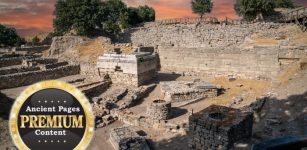 Mystery Of The Large Ancient Boulders In Ireland And Britain – Possible Connection To The City Of Troy?
Featured Stories | Oct 17, 2023
Mystery Of The Large Ancient Boulders In Ireland And Britain – Possible Connection To The City Of Troy?
Featured Stories | Oct 17, 2023 -
 What Happened To The Ancient Tribe That Entered A Secret Underground World And Never Came Back?
Featured Stories | Feb 1, 2021
What Happened To The Ancient Tribe That Entered A Secret Underground World And Never Came Back?
Featured Stories | Feb 1, 2021 -
 Historic Graffiti Made By Soldiers Sheds Light On Africa’s Maritime Heritage – New Study
Archaeology | May 6, 2022
Historic Graffiti Made By Soldiers Sheds Light On Africa’s Maritime Heritage – New Study
Archaeology | May 6, 2022 -
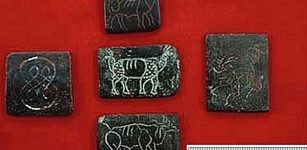 Curious Ancient Copper Plates And The Mystery Of Indus Valley
Artifacts | Oct 24, 2015
Curious Ancient Copper Plates And The Mystery Of Indus Valley
Artifacts | Oct 24, 2015 -
 Qumran: The Dead Sea Scrolls And Their Connection To Enigmatic Essenes
Civilizations | Feb 20, 2016
Qumran: The Dead Sea Scrolls And Their Connection To Enigmatic Essenes
Civilizations | Feb 20, 2016 -
 The Untold Story Of The Inca – Mysterious Place Of The Raised Stones – Part 2
Civilizations | Jul 5, 2019
The Untold Story Of The Inca – Mysterious Place Of The Raised Stones – Part 2
Civilizations | Jul 5, 2019 -
 Unusual Object With Crosses And Enigmatic Runes Discovered In Sweden
Archaeology | May 16, 2018
Unusual Object With Crosses And Enigmatic Runes Discovered In Sweden
Archaeology | May 16, 2018 -
 Sunken 18th-Century British Warship HMS Tyger Found In The Dry Tortugas National Park, Florida
Archaeology | Mar 19, 2024
Sunken 18th-Century British Warship HMS Tyger Found In The Dry Tortugas National Park, Florida
Archaeology | Mar 19, 2024 -
 Face Of Egyptian Man Who Lived 35,000 Years Ago Reconstructed
Archaeology | Apr 7, 2023
Face Of Egyptian Man Who Lived 35,000 Years Ago Reconstructed
Archaeology | Apr 7, 2023 -
 Did The Unique Gjermundbu Viking Helmet Belong To A Warrior Who Served Rulers In The East?
Archaeology | Feb 8, 2022
Did The Unique Gjermundbu Viking Helmet Belong To A Warrior Who Served Rulers In The East?
Archaeology | Feb 8, 2022 -
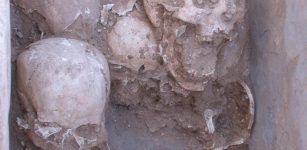 Unusual Burial Ceremony: Bones Of The Dead Were Sorted And Categorized Before Burial
Archaeology | Jan 24, 2016
Unusual Burial Ceremony: Bones Of The Dead Were Sorted And Categorized Before Burial
Archaeology | Jan 24, 2016 -
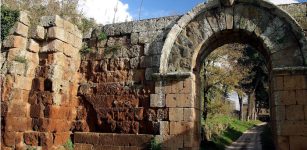 New Clues About The Fascinating Ancient Roman City Falerii Novi Revealed By Scientists
Archaeology | Sep 13, 2022
New Clues About The Fascinating Ancient Roman City Falerii Novi Revealed By Scientists
Archaeology | Sep 13, 2022 -
 What Was The True Meaning Of Pankration And Other Ancient Games
Archaeology | Sep 11, 2021
What Was The True Meaning Of Pankration And Other Ancient Games
Archaeology | Sep 11, 2021 -
 Egyptian Blue: World’s Oldest Artificial Pigment
Ancient History Facts | Feb 6, 2016
Egyptian Blue: World’s Oldest Artificial Pigment
Ancient History Facts | Feb 6, 2016 -
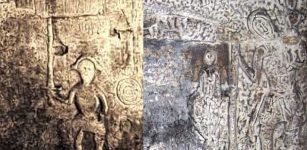 Mysterious Royston Cave And Its Unexplained Carvings Still Puzzle Scientists
Featured Stories | Jan 11, 2014
Mysterious Royston Cave And Its Unexplained Carvings Still Puzzle Scientists
Featured Stories | Jan 11, 2014 -
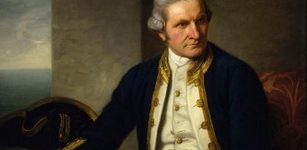 On This Day In History: Captain James Cook Spotted The East Coast Of Australia – On Apr 19, 1770
News | Apr 19, 2016
On This Day In History: Captain James Cook Spotted The East Coast Of Australia – On Apr 19, 1770
News | Apr 19, 2016 -
 Birka Artifacts Shed Light On Vikings’ Daily Life
Artifacts | Jun 24, 2019
Birka Artifacts Shed Light On Vikings’ Daily Life
Artifacts | Jun 24, 2019 -
 Ördög – Shapeshifting Demon Who Controls The Evil And Dark Forces In The World
Featured Stories | Oct 23, 2019
Ördög – Shapeshifting Demon Who Controls The Evil And Dark Forces In The World
Featured Stories | Oct 23, 2019 -
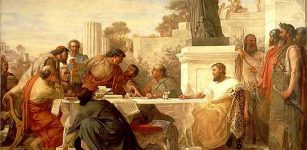 On This Day In History: Julian ‘The Apostate’ Died During The Retreat From The Sassanian Empire – On June 26, 363
News | Jun 26, 2016
On This Day In History: Julian ‘The Apostate’ Died During The Retreat From The Sassanian Empire – On June 26, 363
News | Jun 26, 2016 -
 Paleolithic Cave Dwellers And Light They Could Get In Darkness
Archaeology | Jun 21, 2021
Paleolithic Cave Dwellers And Light They Could Get In Darkness
Archaeology | Jun 21, 2021


